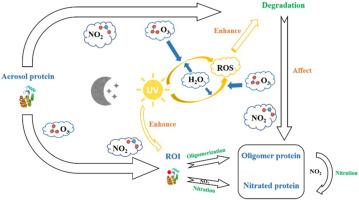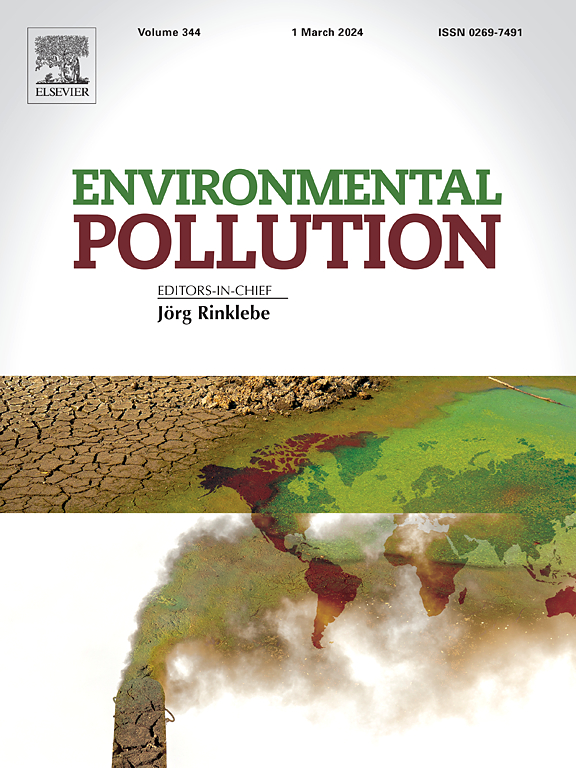Ozone and nitrogen dioxide mediated protein multiphase reactions under ultraviolet radiation conditions
IF 7.6
2区 环境科学与生态学
Q1 ENVIRONMENTAL SCIENCES
引用次数: 0
Abstract
Proteins in aerosols can undergo multiphase reactions when exposed to air pollutants like ozone (O3) and nitrogen dioxide (NO2), posing adverse impacts on the environment and human health. The influence of radiation on the reactions has not been thoroughly studied and the reaction mechanism remains unclear. We coated bovine serum albumin exposed (BSA) in a flow tube and exposed it to different combinations of O3 and NO2 under dark and ultraviolet (UV) radiation conditions. The results showed that O3 could significantly promote the degradation, nitration and oligomerization of BSA, indicating that O3 is the primary driver of the multiphase reactions. We found that UV enhanced protein degradation after exposure to NO2 and O3. Meanwhile, UV also enhanced the nitration and oligomerization of protein by NO2. When exposed to NO2 and O3, the effects of nitration and oligomerization on tyrosine residue of BSA was also investigated. Nitrated tyrosine (NTyr) levels were always higher than that of cross-linked tyrosine (DiTyr), highlighting the dominance of nitration in modification reactions. However, the negative influence of UV radiation on protein nitration and oligomerization of BSA was observed in our exposure experiment. We propose that UV radiation induced degradation may be an important factor to suppress nitration and oligomerization via the breakage of nitrated and oligomerized protein products. This work provides the dataset and knowledge by laboratory exposure to emphasize the possible role of radiation in the multiphase reactions of proteins in the atmosphere, which will help to gain a better understanding of reaction mechanisms.

求助全文
约1分钟内获得全文
求助全文
来源期刊

Environmental Pollution
环境科学-环境科学
CiteScore
16.00
自引率
6.70%
发文量
2082
审稿时长
2.9 months
期刊介绍:
Environmental Pollution is an international peer-reviewed journal that publishes high-quality research papers and review articles covering all aspects of environmental pollution and its impacts on ecosystems and human health.
Subject areas include, but are not limited to:
• Sources and occurrences of pollutants that are clearly defined and measured in environmental compartments, food and food-related items, and human bodies;
• Interlinks between contaminant exposure and biological, ecological, and human health effects, including those of climate change;
• Contaminants of emerging concerns (including but not limited to antibiotic resistant microorganisms or genes, microplastics/nanoplastics, electronic wastes, light, and noise) and/or their biological, ecological, or human health effects;
• Laboratory and field studies on the remediation/mitigation of environmental pollution via new techniques and with clear links to biological, ecological, or human health effects;
• Modeling of pollution processes, patterns, or trends that is of clear environmental and/or human health interest;
• New techniques that measure and examine environmental occurrences, transport, behavior, and effects of pollutants within the environment or the laboratory, provided that they can be clearly used to address problems within regional or global environmental compartments.
 求助内容:
求助内容: 应助结果提醒方式:
应助结果提醒方式:


